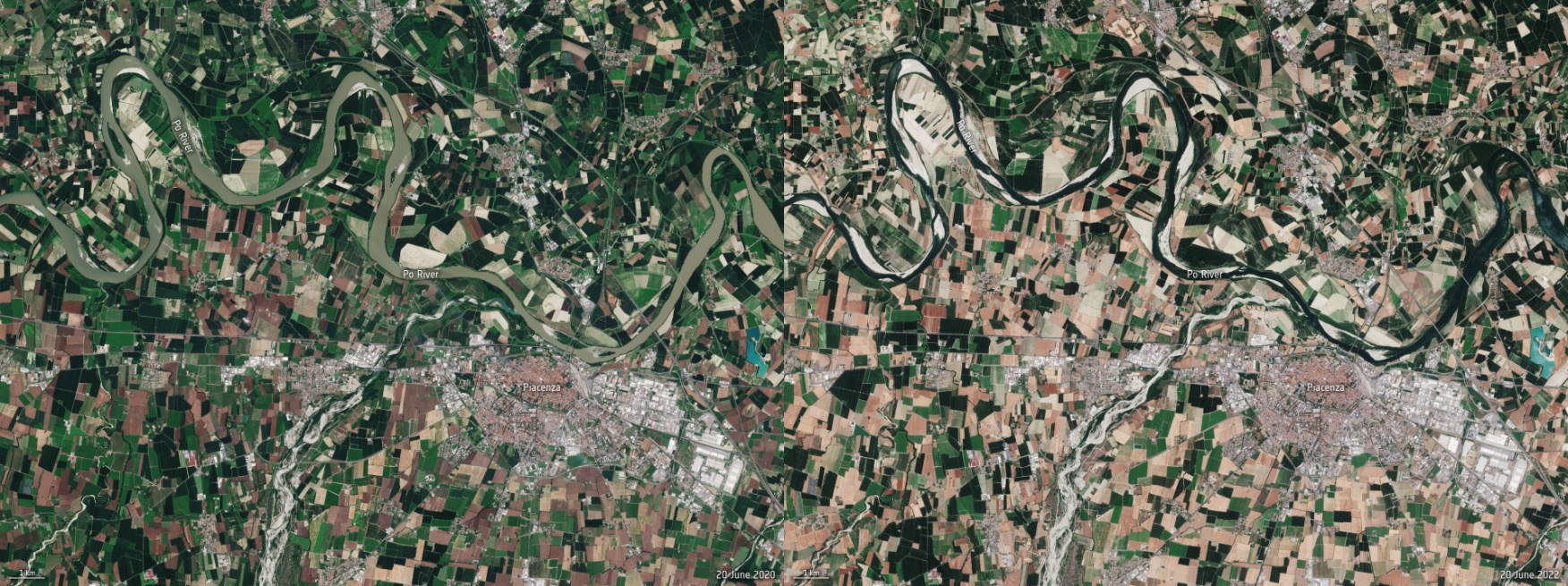
Photo: iStock
The Italian way of life is under threat, especially in the valley of the river Po. A record drought turned the country’s largest river into a creek, which affects the world-famous scenery, but also the production of wine, olive oil and cheese.
The heatwave that is devastating Western and Southern Europe continued Italy’s plight – the country already had 70% less snow in the winter, followed by several months with almost no rain and temperatures of three to four degrees above average. Paradoxically, there were also episodes of hailstorms and intense flooding.
Northern Italy was particularly hit. The country’s longest river, the Po, has almost dried up and the government declared a state of emergency in five regions.
Experts have no doubt that the increase in the number and intensity of extreme weather events is the result of climate change
It is important to note that individual extreme weather events can’t be directly linked to climate change. On the other hand, droughts, heatwaves and wildfires in Italy and the entire Mediterranean are becoming more and more frequent. Experts quoted by the European Climate Foundation (ECF) have no doubt about the cause, pointing also to flash floods, landslides and even Mediterranean hurricanes.
“After decades of delays, the climate prevention window is rapidly closing: let’s use it soon and well, because we cannot negotiate with thermodynamics – and its wrath will be unstoppable!” President of the Italian Meteorological Society Luca Mercalli said.
Climate change is putting in danger Italians’ livelihoods, altering their territory and threatening their cultural patrimony and way of life.
Drought in Mediterranean, Italy is proof of climate change
Italy has already experienced one of the largest temperature increases in Europe, at 1.54 degrees Celsius above the 1961-1990 average – and continues to warm faster than the global average – reaching a record of 48.8°C in Syracuse last year, the highest European value ever. In 2021 alone, 187 extreme weather phenomena occurred in the country.
“The climate is changing, and the drought that is currently hitting the Mediterranean, and Italy in particular is proof of it. Through my work, I have seen too many sad examples of great, thriving civilizations that failed to plan for the long term. But at the time, no one was able to forecast impending climatic shifts. Compared with the Romans or the ancient Maya, we have the tools and the ability to adjust our food chains and energy consumption in the face of major climatic changes,” said Brian Fagan, professor emeritus of anthropology at the University of California.

GDP loss projected at as much as 8% through 2100
Early data says the current drought alone has caused over EUR 3 billion in damages to agriculture. But looking at longer-term estimates for a high emissions scenario, the country could face losses up to 8% of GDP, or EUR 116 billion by the end of the century. In June, a 10.8% jump in the prices of fruit was measured on an annual scale, compared to 11.8% for vegetables.
Final prices of fruit, vegetables, pasta and milk could jump 30% this year in the Low Padua plain
Italians will pay over EUR 8.1 billion more this year for food alone, according to one estimate. The production of lettuce, tomatoes, carrots, potatoes, melons, peaches, apples and pears is seen suffering a major decline in 2022 in the Low Padua plain, which has been especially affected by the lack of water and high temperatures.
The branch of Italian agricultural confederation CIA for Veneto warned of a risk that the final prices of fruit, vegetables, pasta and milk could rise 30% year on year in the area.
Iacoboni: Deal with emergency, act on causes
“The climate is presenting us the bill, and it is getting steeper every year. Unprecedented droughts, record heat waves, water bombs and centuries-old glaciers crumbling,” said Luca Iacoboni from Italian climate change think tank ECCO. The impacts of climate change could not be more evident, and action must be taken now, both to deal with the emergency and to act on the causes, he added.
“Along with the impacts we read about in the news every day, the economic and social consequences of the climate crisis are becoming more and more evident. The solutions exist and there is still time to put them into practice, but we cannot waste a single second. Reduction of emissions, mitigation and adaptation policies, gradual but rapid abandonment of gas, oil and coal: in essence, the achievement of climate goals,” Iacoboni underscored.
Some local authorities banned the use of water for washing cars or filling private swimming pools. In the town of Castenaso near Bologna, hairdressers risk a fine if they shampoo a customer’s hair twice! Milan turned off its decorative fountains.

Photo: The Po valley near Piacenza in June 2020 (left) and June 2022 (European Space Agency)
Landscape, tourism under threat
The Po valley accounts for two fifths of Italy’s food production and half of Europe’s rice, but farmers are now struggling to keep crops irrigated. The river has turned into a creek, according to the European Space Agency’s Copernicus Sentinel-2 satellite images.
Olives and vines-covered rolling hills, snow-covered peaks and busy beaches might become a memory of the past
Olive oil, wine, tomatoes, Grana Padano are only some of the ingredients at the base of Italian cuisine that will be impacted by climate change. Projections paint a picture of a much different landscape, too: the olives and vines-covered rolling hills, snow-covered peaks and busy beaches might become a memory of the past, ECF said. Italy also ranks first in the Mediterranean for cultural heritage sites at risk from flooding, like Venice, and those at risk from erosion.
To make matters worse, hydropower plants are becoming useless and seawater from the Adriatic is entering the Po delta, damaging crops and increasing the salinity of water.


















Be the first one to comment on this article.